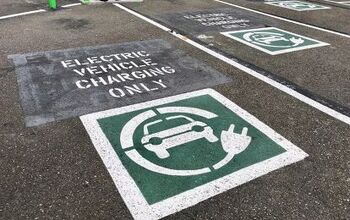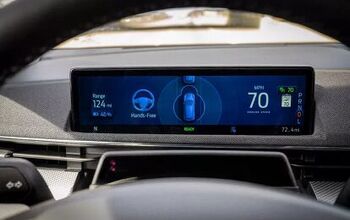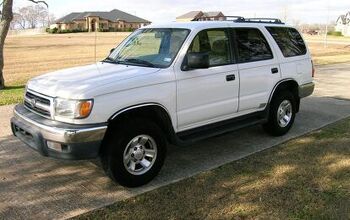Piston Slap: Why You So Stupid, Smart Junction Box?!

TTAC commentator claytori writes:
Hello Sajeev,
This email is about my 80-year-old mother-in-law Shirley, who is a sweetie and thinks I can fix anything. I hit the MIL jackpot.
Shirley owns a 2010 Lincoln MKZ 3.5 V6 with about 35,000 miles on it. About a year ago, the battery died on the Lincoln. CAA replaced it with another battery with a 13-month replacement warranty, on which less than 1 week remains.
Two weeks ago, the car wouldn’t start again, so I boosted it from my Saab 9-3, which sits beside the Lincoln in a heated garage. It started right away. As she doesn’t drive it more than about 3 miles at a time, I drove the car for a day to charge up the battery.
The battery was great for two days — then dead again.
I drove the Lincoln to work after another boost and did some parasitic drain diagnosis. There’s a 2A drain from a 120A fuse on the battery post feeding a wire that goes to the “smart” fuse panel. That panel is thoroughly buried behind the instrument panel. I subscribed to Alldata for the electrical schematics and found out the panel has some microprocessor parts, MOSFETs, and other miscellaneous bits.
Since it must be divorced and married to the car’s computer network for proper replacement, I condemned the Lincoln to the dealer. The techs said they couldn’t find a problem, and called Shirley to pick up the car. When she went to start the car to head home from the dealer, the MKZ was dead. She’s understandably very upset.
The dealer wants to replace a perfectly good battery because the techs are too lazy or incompetent to do a proper investigation. The battery is as fine as you’d expect after being drawn down a few times. The alternator is also fine. I don’t know what to tell her after this.
I’d fix the issue myself, but one of the four cables connected to the panel won’t allow it to come down, as it’s held with a plastic clip. Do I just pull hard and break the clip? Do I tell her to leave the car at the dealer until the mechanics get tired of looking at it and actually fix it?
Shirley won’t take cabs as she thinks the drivers are all robbers, rapists, terrorists, or a combination of all three, nor will she drive our spare car.
Sajeev answers:
Your mother-in-law is right about you: I admire your masterful diagnostic work.
From what I see on the Ford Fusion forums, either break the clip or remove the driver’s seat (mind the airbag!) for access without turning your back into a pretzel. I’d break the clip and be done with it, but that’s your call.
After you complete the diagnosis, let’s hope you don’t have to replace the smart junction box. I reckon you’re pulling out the driver’s seat for better access on that job.
[Image: Lincoln]
Send your queries to sajeev@thetruthaboutcars.com. Spare no details and ask for a speedy resolution if you’re in a hurry…but be realistic, and use your make/model specific forums instead of TTAC for more timely advice.

More by Sajeev Mehta
Latest Car Reviews
Read moreLatest Product Reviews
Read moreRecent Comments
- SCE to AUX My son cross-shopped the RAV4 and Model Y, then bought the Y. To their surprise, they hated the RAV4.
- SCE to AUX I'm already driving the cheap EV (19 Ioniq EV).$30k MSRP in late 2018, $23k after subsidy at lease (no tax hassle)$549/year insurance$40 in electricity to drive 1000 miles/month66k miles, no range lossAffordable 16" tiresVirtually no maintenance expensesHyundai (for example) has dramatically cut prices on their EVs, so you can get a 361-mile Ioniq 6 in the high 30s right now.But ask me if I'd go to the Subaru brand if one was affordable, and the answer is no.
- David Murilee Martin, These Toyota Vans were absolute garbage. As the labor even basic service cost 400% as much as servicing a VW Vanagon or American minivan. A skilled Toyota tech would take about 2.5 hours just to change the air cleaner. Also they also broke often, as they overheated and warped the engine and boiled the automatic transmission...
- Marcr My wife and I mostly work from home (or use public transit), the kid is grown, and we no longer do road trips of more than 150 miles or so. Our one car mostly gets used for local errands and the occasional airport pickup. The first non-Tesla, non-Mini, non-Fiat, non-Kia/Hyundai, non-GM (I do have my biases) small fun-to-drive hatchback EV with 200+ mile range, instrument display behind the wheel where it belongs and actual knobs for oft-used functions for under $35K will get our money. What we really want is a proper 21st century equivalent of the original Honda Civic. The Volvo EX30 is close and may end up being the compromise choice.
- Mebgardner I test drove a 2023 2.5 Rav4 last year. I passed on it because it was a very noisy interior, and handled poorly on uneven pavement (filled potholes), which Tucson has many. Very little acoustic padding mean you talk loudly above 55 mph. The forums were also talking about how the roof leaks from not properly sealed roof rack holes, and door windows leaking into the lower door interior. I did not stick around to find out if all that was true. No talk about engine troubles though, this is new info to me.


































Comments
Join the conversation
Lead/acid batteries self discharge, so if you put one on the shelf, it will eventually die even if nothing is connected to it. Every car today uses some battery juice when the car is parked--even for something as mundane as the alarm system. It may be that the OP's measured 2 amp draw is normal. A 30-minute drive will not fully charge a discharged battery, because as the battery voltage rises back to normal, the amount of current delivered to the battery falls off. Cycling the battery between fully discharged and partially charged is a great way to kill it. So before ripping out black boxes and so on, the OP's M-I-L may have to change her driving habits or invest in a low-amp charger and be willing to connect/disconnect it when using the vehicle. Perhaps her clever son in law can figure out a simple plug/unplug way to do it, like the engine block heater pigtail lurking behind the grill of many frozen north vehicles. As an aside, this usage profile would be ideal for an EV.
My 450SL has the same problem. I have gone through every damn possible drain scenario to no avail. We only drive it about 2000 miles per year. But , after yet another dead battery, trust my dear wife to sum it up succinctly. "What does a battery cost-$100? $100 divided by 18 months equals $6 per month - what are you complaining about"? I shut up.